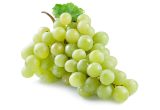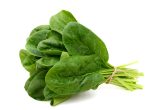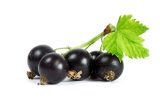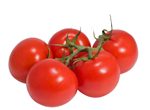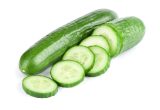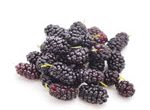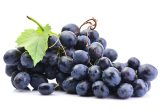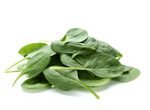Blueberry

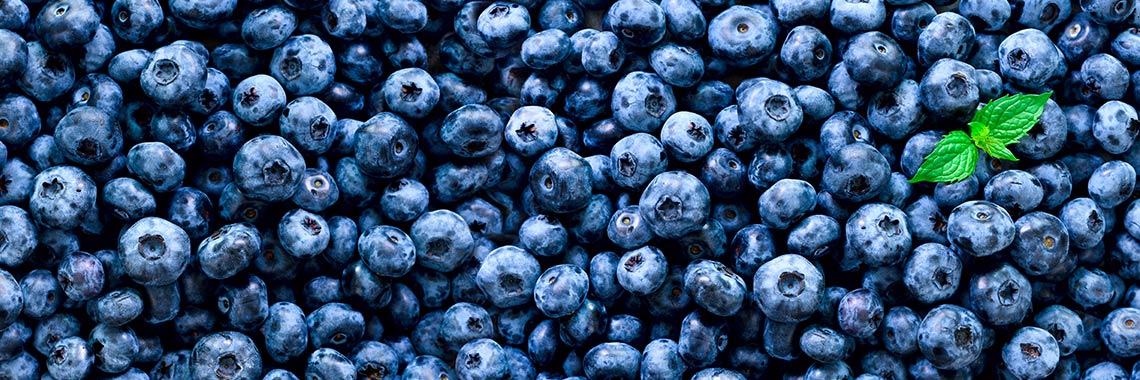
Description
- The blueberry bush (Vaccinium corymbosum) belongs to the Ericaceae family.
- It is native to North America (Rodriguez-Saona, 2019).
PHYSICAL AND ORGANOLEPTIC CHARACTERISTICS
- The blueberry is a small round fruit. Its epidermis is covered with a hydrophobic surface with a matt appearance, composed of the cuticle and an epicuticular wax. The thicker this hydrophobic surface, the better the fruit retains its physical and nutritional qualities during harvesting and storage (Sapers, 1985).
- The skin (epidermis + hydrophobic surface) is blue and the flesh yellowish white (Michalska, 2015).
- The blue colour of the skin is due to the presence of anthocyanins. At least 14 anthocyanins and 3 acetylated anthocyanins have been quantified, with delphidin 3-galactoside, petunidin 3-galactoside and malvidin 3-galactoside being the most represented (Cho, 2004). Chlorogenic acid, also present, is a co-pigment that intensifies the colour of the anthocyanins (Mazza, 1990).
- Conversely, the “absence of colour” of the flesh is characterised by the virtual absence of anthocyanins (Lee, 2006).
- During ripening, the blueberry becomes less and less acidic, with a titratable acidity that decreases. Malic acid is the predominant organic acid, responsible for the acidity of the fruit (Castrejón, 2008).
- The content of proanthocyanidins, responsible for the bitter taste of unripe fruits, also decreases with ripening (Zifkin, 2012).
- Ripe blueberry has a sweet taste, the intensity of which varies according to the cultivar (Mennella, 2017). This sweetness is due to the presence of sucrose, but also fructose, galactose and glucose (Montecchiarini, 2018).
- Concerning the aroma of blueberries, more than 120 volatile compounds have been listed (Sater, 2020). Among them, 1-penten-3-ol, hexanal, (E)-2-hexenal, (E)-2-hexen-1-ol, and linalool are thought to play significant roles. During ripening, the average amount of all volatile compounds increases (Gilbert, 2013).
COMPOSITION CHARACTERISTICS (excluding macronutrients, vitamins and minerals)
- Blueberry contains polyphenols: flavonoids (proanthocyanidins and flavonols), phenolic acids (gallic, syringic, vanillic and hydroxycinnamic acids) and stilbenes derivatives The polyphenol content can be up to 304 mg/100 g of fresh fruit, depending on the cultivar and ripeness. They are mainly present in the outer layers (the skin and just under the epidermis). Only a small amount is found in the flesh (Michalska, 2015).
- While anthocyanin content increases with ripening, the contents of proanthocyanidins, flavonols and hydroxycinnamic acids, a family of phenolic acids, decrease (Castrejón, 2008; Zifkin, 2012). The ripe fruit therefore contains mostly anthocyanins with a content of up to 495 mg/100 g of fruit (Michalska, 2015).
- The polyphenols present have antioxidant and protective activity, believed to provide many health benefits. They possess the following activity:
- Protection against lipid peroxidation and other types of oxidative damage;
- Protection against DNA mutations, which hinder their transformation into cancer cells;
- antitumour;
- anti-inflammatory;
- immunomodulatory;
- neuroprotective;
- prevention of cardiovascular pathologies;
- prevention of obesity and diabetes;
- antimicrobial (Silva, 2018).
- Blueberry also contains a notable amount of organic acids, such as malic acid, citric acid and ascorbic acid or vitamin C, which is also known as a powerful antioxidant (Castrejón, 2008; Silva, 2018).
RAW
The following values are approximate and depend on variety, season, ripeness, cultivation conditions, etc. The blueberry brings on average 57.70 calories (kcal) per 100 g, i.e. 244 kJ. A portion of blueberries weighs on average 140 g, which represents an energy intake of 80.78 kcal.
COMPOSITION TABLES
For each nutrient, the tables provide information on the content, minimum and maximum values, as well as the percentage of the Dietary Reference Values (DRVs) per 100 g net of raw blueberries.
MACRONUTRIENTS
| Constituent (g) | Average content |
Min-Max per 100g |
DRV% |
|---|---|---|---|
| Water | 84,20 | 80,70 - 86,80 | - |
| Fibers | 2,40 | 2,30 - 2,80 | - |
| Carbohydrates | 10,60 | - | 4,08 |
| Sugars | 9,96 | 7,67 - 12,30 | 11,07 |
| Lipids | 0,33 | 0,20 - 0,50 | 0,47 |
| Saturated fat | 0,028 | - | 0,14 |
| Protein | 0,87 | 0,60 - 1,14 | 1,74 |
| Constituent (g) | Amount | Min-Max | DRV% |
|---|---|---|---|
| Water | Ciqual 2020 | - | - |
| Fibers | Ciqual 2020 | - | - |
| Carbohydrates | Ciqual 2020 | - | Règlement (UE) N°1169/2011 du parlement Européen et du conseil du 25 octobre 2011 |
| Sugars | Ciqual 2020 | - | Règlement (UE) N°1169/2011 du parlement Européen et du conseil du 25 octobre 2011 |
| Lipids | Ciqual 2020 | - | Règlement (UE) N°1169/2011 du parlement Européen et du conseil du 25 octobre 2011 |
| Saturated fat | Ciqual 2020 | - | Règlement (UE) N°1169/2011 du parlement Européen et du conseil du 25 octobre 2011 |
| Protein | Ciqual 2020 | - | Règlement (UE) N°1169/2011 du parlement Européen et du conseil du 25 octobre 2011 |
Zoom on carbohydrates
- The energy of the blueberry comes essentially from its carbohydrates, at 10.60 g per 100 g.
- The main sugars present in blueberries are fructose (4.97 g per 100 g), glucose (4.88 g per 100 g) and sucrose (0.11 g per 100 g).
- The amount of carbohydrates remains lower than the average quantity found in fresh fruit: about 11.31 g per 100 g.
Zoom on fibres
- The amount of fibre is significant (2.40 g per 100 g) but remains lower than the average quantity found in fresh fruits (2.77 g per 100 g).
Zoom on proteins
- The protein content of blueberries (0.87 g per 100 g) is slightly lower than the average amount found in fresh fruit (0.93 g per 100 g).
Zoom on lipids
- The amount of fat in blueberries (0.33 g per 100 g) is lower than the average for fresh fruit (0.56 g per 100 g).
MINERALS AND TRACE ELEMENTS
| Constituent | Average content |
Min-Max per 100g |
DRV% |
|---|---|---|---|
| Calcium (mg) | 6 | 2 - 11 | 0,75 |
| Chloride (mg) | - | - | - |
| Copper (mg) | 0,057 | 0,015 - 0,088 | 5,70 |
| Iron (mg) | 0,28 | 0,11 - 0,41 | 2 |
| Iodine (µg) | 0,50 | - | 0,33 |
| Magnesium (mg) | 6 | 5 - 7 | 1,60 |
| Manganese (mg) | 0,34 | 0,16 - 0,43 | 17 |
| Phosphorus (mg) | 12 | 7 - 16 | 1,71 |
| Potassium (mg) | 77 | 72 - 83 | 3,85 |
| Selenium (µg) | - | - | - |
| Sodium (mg) | 1 | 1 - NC | - |
| Zinc (mg) | 0,16 | 0,10 - 0,28 | 1,60 |
| Constituent | Amount | Min-Max | DRV% |
|---|---|---|---|
| Calcium (mg) | Ciqual 2020 | - | Règlement (UE) N°1169/2011 du parlement Européen et du conseil du 25 octobre 2011 |
| Chloride (mg) | Ciqual 2020 | - | Règlement (UE) N°1169/2011 du parlement Européen et du conseil du 25 octobre 2011 |
| Copper (mg) | Ciqual 2020 | - | Règlement (UE) N°1169/2011 du parlement Européen et du conseil du 25 octobre 2011 |
| Iron (mg) | Ciqual 2020 | - | Règlement (UE) N°1169/2011 du parlement Européen et du conseil du 25 octobre 2011 |
| Iodine (µg) | Ciqual 2020 | - | Règlement (UE) N°1169/2011 du parlement Européen et du conseil du 25 octobre 2011 |
| Magnesium (mg) | Ciqual 2020 | - | Règlement (UE) N°1169/2011 du parlement Européen et du conseil du 25 octobre 2011 |
| Manganese (mg) | Ciqual 2020 | - | Règlement (UE) N°1169/2011 du parlement Européen et du conseil du 25 octobre 2011 |
| Phosphorus (mg) | Ciqual 2020 | - | Règlement (UE) N°1169/2011 du parlement Européen et du conseil du 25 octobre 2011 |
| Potassium (mg) | Ciqual 2020 | - | Règlement (UE) N°1169/2011 du parlement Européen et du conseil du 25 octobre 2011 |
| Selenium (µg) | Ciqual 2020 | - | Règlement (UE) N°1169/2011 du parlement Européen et du conseil du 25 octobre 2011 |
| Sodium (mg) | Ciqual 2020 | - | - |
| Zinc (mg) | Ciqual 2020 | - | Règlement (UE) N°1169/2011 du parlement Européen et du conseil du 25 octobre 2011 |
Zoom on minerals and trace elements
- Blueberry is a source of manganese as it provides the equivalent of 17% of DRVs, i.e. 0.34 mg per 100 g.
- It also provides the equivalent of 5.70% of DRVs for copper, i.e. 0.057 mg per 100 g.
- The quantity of other minerals and trace elements represents less than 4% of DRVs.
VITAMINS
| Constituent | Average content |
Min-Max per 100g |
DRV% |
|---|---|---|---|
| Provitamin A Beta-carotene (µg) | 32 | 13 - 89 | - |
| Vitamin A equivalent (µg) | 5,33 | 2,17 - 14,83 | 0,67 |
| Vitamin B1 (mg) | 0,037 | 0,022 - 0,069 | 3,36 |
| Vitamin B2 (mg) | 0,041 | 0,02 - 0,06 | 2,93 |
| Vitamin B3 (mg) | 0,42 | 0,22 - 0,87 | 2,63 |
| Vitamin B5 (mg) | 0,12 | 0,058 - 0,16 | 2 |
| Vitamin B6 (mg) | 0,052 | 0,024 - 0,08 | 3,71 |
| Vitamin B9 (µg) | 6 | 3 - 11 | 3 |
| Vitamin C (mg) | 9,70 | 7,40 - 11,50 | 12,13 |
| Vitamin E (mg) | 0,57 | 0,40 - 1 | 4,75 |
| Vitamin K1 (µg) | 19,30 | 15,50 - 29,10 | 25,73 |
| Constituent | Amount | Min-Max | DRV% |
|---|---|---|---|
| Provitamin A Beta-carotene (µg) | Ciqual 2020 | - | - |
| Vitamin A equivalent (µg) | Calcul à partir de la valeur Provitamine A Béta-carotène* | - | Règlement (UE) N°1169/2011 du parlement Européen et du conseil du 25 octobre 2011 |
| Vitamin B1 (mg) | Ciqual 2020 | - | Règlement (UE) N°1169/2011 du parlement Européen et du conseil du 25 octobre 2011 |
| Vitamin B2 (mg) | Ciqual 2020 | - | Règlement (UE) N°1169/2011 du parlement Européen et du conseil du 25 octobre 2011 |
| Vitamin B3 (mg) | Ciqual 2020 | - | Règlement (UE) N°1169/2011 du parlement Européen et du conseil du 25 octobre 2011 |
| Vitamin B5 (mg) | Ciqual 2020 | - | Règlement (UE) N°1169/2011 du parlement Européen et du conseil du 25 octobre 2011 |
| Vitamin B6 (mg) | Ciqual 2020 | - | Règlement (UE) N°1169/2011 du parlement Européen et du conseil du 25 octobre 2011 |
| Vitamin B9 (µg) | Ciqual 2020 | - | Règlement (UE) N°1169/2011 du parlement Européen et du conseil du 25 octobre 2011 |
| Vitamin C (mg) | Ciqual 2020 | - | Règlement (UE) N°1169/2011 du parlement Européen et du conseil du 25 octobre 2011 |
| Vitamin E (mg) | Ciqual 2020 | - | Règlement (UE) N°1169/2011 du parlement Européen et du conseil du 25 octobre 2011 |
| Vitamin K1 (µg) | Ciqual 2020 | - | Règlement (UE) N°1169/2011 du parlement Européen et du conseil du 25 octobre 2011 |
Zoom on vitamins
- Blueberry is a source of vitamin K1 as it provides the equivalent of 25.73% of DRVs, i.e. 19.30 µg per 100 g. According to the data of the Ciqual 2020 table, the blueberry is the fruit that contains the most vitamin K1.
- It provides a significant amount of vitamin C (9.70 mg per 100 g), equivalent to 12.13% of DRVs.
- The amount of other vitamins represents less than 5% of DRVs.
* Calculation made: Beta-Carotene / 6 + retinol
POLYPHENOLS
| Constituent (mg) | Average content |
Min-Max per 100mg |
|---|---|---|
| Flavonoids (mg) | 1,27 | 1,27 - 1,27 |
| of which Flavonols (mg) | 1,27 | 1,27 - 1,27 |
| Phenolic Acids (mg) | 2,90 | 2,90 - 2,90 |
| of which Hydroxycinnamic acids (mg) | 2,90 | 2,90 - 2,90 |
| Stilbenes (mg) | 0,67 | 0,67 - 0,67 |
| Total polyphenols | 4,84 | 4,84 - 4,84 |
| Constituent (mg) | Amount | Min-Max |
|---|---|---|
| Flavonoids | Phénol-Explorer version 3.6- Méthode utilisée : chromatographie | - |
| of which Flavonols | Phénol-Explorer version 3.6- Méthode utilisée : chromatographie | - |
| Phenolic Acids | Phénol-Explorer version 3.6- Méthode utilisée : chromatographie | - |
| of which Hydroxycinnamic acids | Phénol-Explorer version 3.6- Méthode utilisée : chromatographie | - |
| Stilbenes | Phénol-Explorer version 3.6- Méthode utilisée : chromatographie | - |
| Total polyphenols | Phénol-Explorer version 3.6- Méthode utilisée : chromatographie | - |
Zoom on polyphenols
- Polyphenols are substances with an antioxidant effect.
- Hydroxycinnamic acids, which are part of the phenolic acids, are mainly present in blueberry composites, representing 59.92% of the total polyphenols identified.
- Next come flavonols (26.24% of total polyphenols).
- Resveratrol, belonging to the stilbene family, represents 13.84% of the total polyphenols in blueberry.
Nutrition and health claims
According to the definitions of nutrition claims as presented in Regulation (EC) No 1924/2006 on nutrition and health claims, and in view of the composition of blueberry, the following claims may be used:
NUTRITION CLAIMS OF BLUEBERRIES
- Source of vitamin K1 (100 g of blueberries provide more than 15% of DRVs)
- Source of manganese (100 g of blueberries provide more than 15% of DRVs)
- Low in fat (100 g of blueberries contain less than 3 g of fat).
HEALTH CLAIMS (for a consumption of 100 g of blueberries)
Vitamin K1
- Vitamin K1 contributes to:
- maintenance of normal bones,
- normal blood clotting.
Manganese
- Manganese contributes to:
- normal energy-yielding metabolism,
- maintenance of normal bones,
- normal formation of connective tissues,
- protection of cells from oxidative stress.
References
- Agence nationale de sécurité sanitaire de l’alimentation, de l’environnement et du travail. Table de composition nutritionnelle des aliments Ciqual 2020. Consultée le 17/08/2020 depuis le site internet Ciqual https://ciqual.anses.fr/
- Castrejón ADR, Eichholz I, Rohn S, Kroh LW, Huyskens-Keil S. Phenolic profile and antioxidant activity of highbush blueberry (Vaccinium corymbosum L.) during fruit maturation and ripening. Food Chem. 2008;109(3), 564–72.
- Cho MJ, Howard LR, Prior RL, Clark JR. Flavonoid glycosides and antioxidant capacity of various blackberry, blueberry and red grape genotypes determined by high-performance liquid chromatography/mass spectrometry. J Sci Food Agric. 2004;84:1771-82.
- Gilbert JL, Schieterman ML, Colquhoun TA, Clark DG, Olmstead JW. Potential for Increasing Southern Highbush Blueberry Flavor Acceptance by Breeding for Major Volatile Components. Hortscience. 2013;48(7):835-43.
- Lee J, Wrolstad RE. Extraction of Anthocyanins and Polyphenolics from Blueberry Processing Waste. J. Food Sci. 2006;69(7):564–73.
- Mazza G, Brouillard R. The mechanism of co-pigmentation of anthocyanins in aqueous solutions. Phytochemistry. 1990;29(4):1097-102.
- Mennella JA, Colquhoun TA, Bobowski NK, Olmstead JW, Bartoshuk L, Clark, D. Farm to Sensory Lab: Taste of Blueberry Fruit by Children and Adults. J. Food Sci. 2017;82(7):1713–9.
- Montecchiarini ML, Margarit E, Morales L, Rivadeneira MF, Bello F, Gollán A, Vázquez D, Podestá FE, Tripodi KEJ. Proteomic and metabolomic approaches unveil relevant biochemical changes in carbohydrate and cell wall metabolisms of two blueberry (Vaccinium corymbosum) varieties with different quality attributes. Plant Physiol Biochem. 2019;136:230-44
- Michalska A, Łysiak G. Bioactive Compounds of Blueberries: Post-Harvest Factors Influencing the Nutritional Value of Products. Int J Mol Sci. 2015;16(8):18642-63.
- Neveu V, Perez-Jiménez J, Vos F, Crespy V, du Chaffaut L, Mennen L, Knox C, Eisner R, Cruz J, Wishart D, Scalbert A. (2010) Phenol-Explorer: an online comprehensive database on polyphenol contents in foods. Database, doi: 10.1093/database/bap024. Full text (free access)
- Règlement (CE) N° 1924/2006 du Parlement européen et du Conseil du 20 décembre 2006 concernant les allégations nutritionnelles et de santé portant sur les denrées alimentaires.
- Règlement (UE) N°432/2012 de la Commission du 16 mai 2012 établissant une liste des allégations de santé autorisées portant sur les denrées alimentaires, autres que celles faisant référence à la réduction du risque de maladie ainsi qu’au développement et à la santé infantiles.
- Règlement (UE) n°1169/2011 du Parlement européen et du Conseil du 25 octobre 2011 concernant l’information des consommateurs sur les denrées alimentaires, modifiant les règlements (CE) n°1924/2006 et (CE) n°1925/2006 du Parlement européen et de Conseil et abrogeant la directive 87/250/CEE de la Commission, la directive 90/496/CEE du Conseil, la directive 1999/10/CE de la Commission, la directive 200/13/CE du Parlement européen et du Conseil, les directives 2002/67/CE et 2008/5/CE de la Commission et le règlement (CE) n°608/2004 de la Commission.
- Rodriguez-Saona C, Vincent C, Isaacs R. Blueberry IPM: Past Successes and Future Challenges. Annu Rev Entomol. 2019;64:95-114
- Sapers GM, Phillips JG. Leakage of Anthocyanins from Skin of Raw and Cooked Highbush Blueberries (Vaccinium corymbosum L.). J. Food Sci. 1985;50(2):437-9.
- Sater HM, Bizzio LN, Tieman DM, Muñoz PD. A Review of the Fruit Volatiles Found in Blueberry and Other Vaccinium Species. J Agric Food Chem. 2020;68(21):5777-86.
- Silva S, Costa EM, Veiga M, Morais RM, Calhau C, Pintado M. Health promoting properties of blueberries: a review. Crit Rev Food Sci Nutr. 2020;60(2):181-200.
- Zifkin M, Jin A, Ozga JA, Zaharia I, Schernthaner JP, Gesell A, Abrams SR, Kennedy JA, Constabel CP. Gene expression and metabolite profiling of developing highbush blueberry fruit indicates transcriptional regulation of flavonoid metabolism and activation of abscisic acid metabolism. Plant Physiol. 2012;158(1):200-24.





